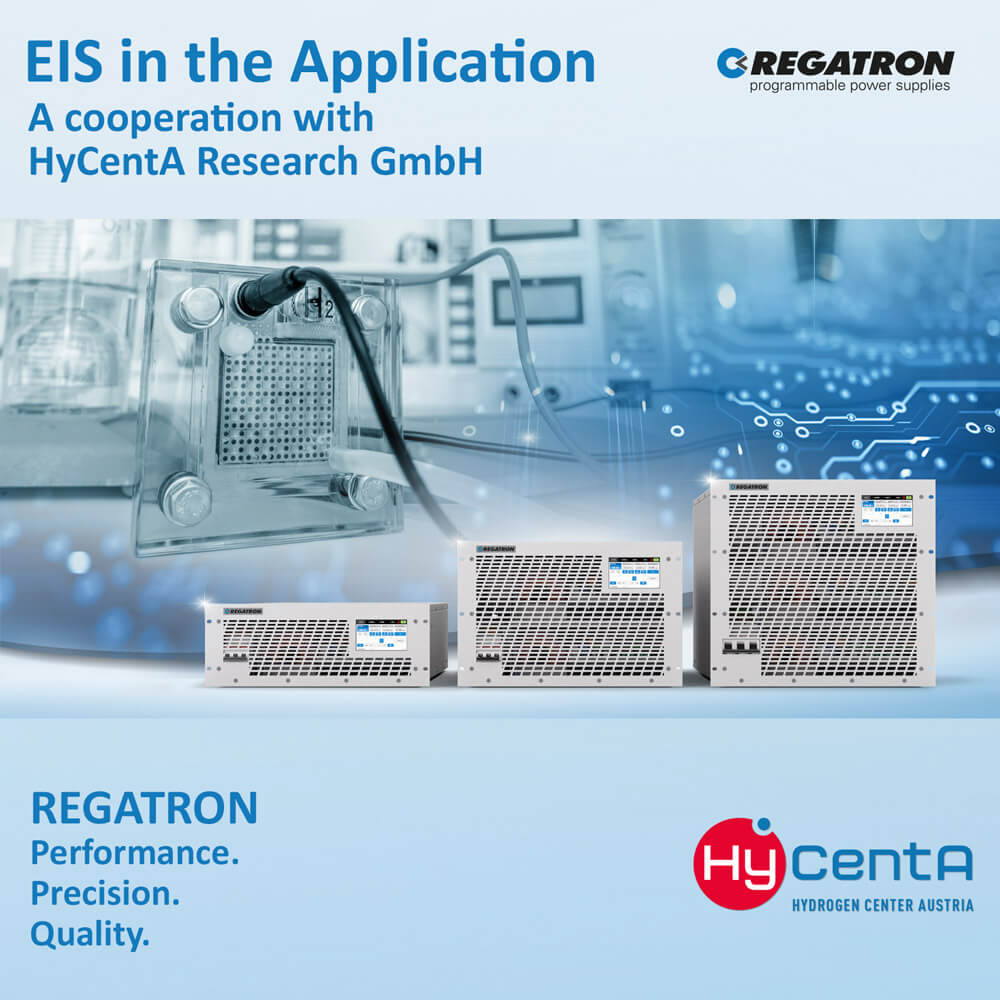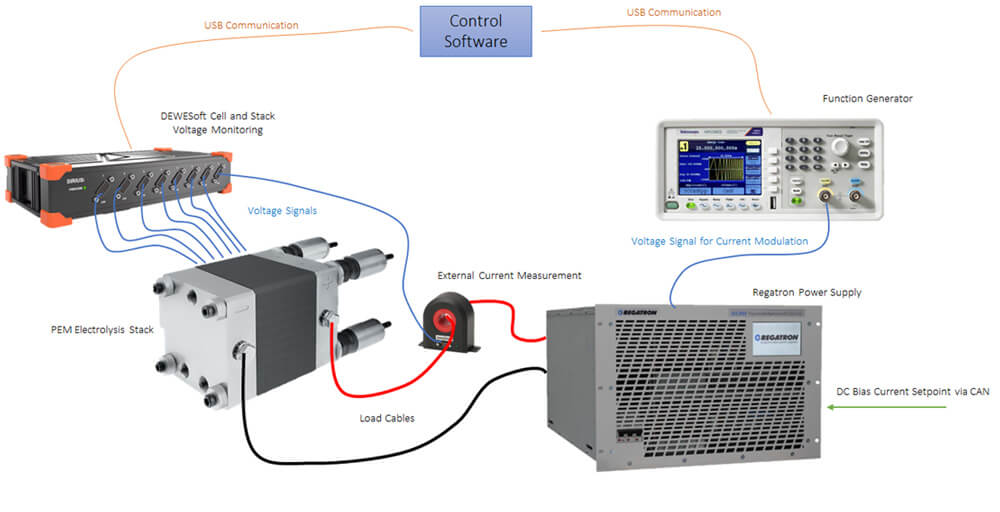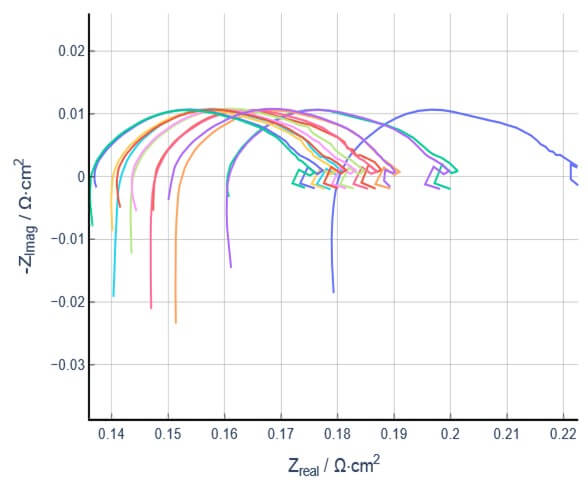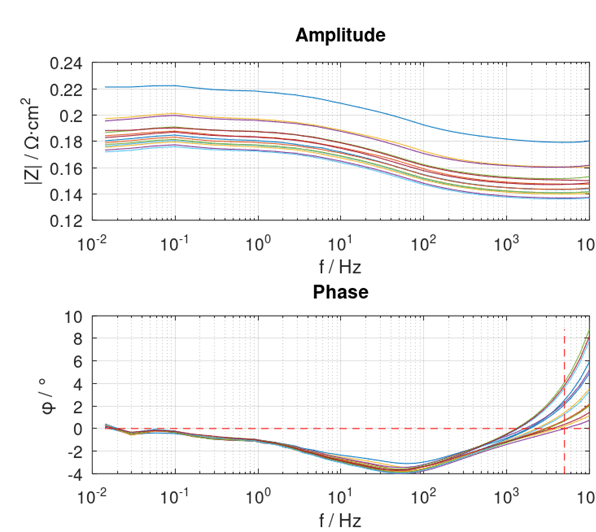Electrochemical Impedance Spectroscopy using Programmable REGATRON G5 Power Supplies
Your report straight from the research! With friendly approval by HyCentA Research GmbH / Austria
Impedance spectroscopy is a measurement method widely used in the development processes of electrochemical systems: Batteries, supercapacitors, fuel cells, or in increasing order electrolyzers at stack power level too. Electrochemical impedance spectroscopy EIS provides crucial information about the internal electrochemical processes in the cell and stack and opens possibilities for describing and quantifying malfunctions and loss mechanisms in detail. The main motivation for the use of EIS with higher power rating for the stack development process are:
- Understanding of the stack design
- Insights into the voltage disparities and differences between the cells
- Description of stack parts like the bipolar plates and their influence on performance
- Monitoring of measurement values that describe the state of health of the stack
In addition to this report, there is also the attached application note available with highly detailed information on the challenges faced in implementing the EIS and how these could be solved by using the advanced REGATRON Power Supplies.
The Testbench
- PEM and AEM electrolysis stacks with a power rating of 1 to 15 kW
- Cathode pressure up to 160 bar
- Possibility of operation under explosive atmospheres on the anode/oxygen side (incl. concentration)
- Cell voltage monitoring of each cell of the stack
- Multi-channel parallel EIS measurement of all cells of the stack
- Up to 24 cells
- EIS frequency range: 0.01 Hz – 10 kHz
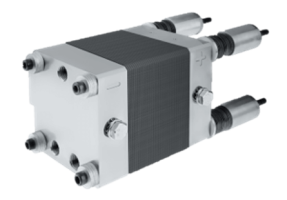
Thanks to their extremely high control dynamics, REGATRON G5 power supply units enable voltage and/or current modulation with frequencies up to 10 kHz. The function generator required for this would be already integrated into the device, but to have further options for modulation often a simple WaveGen is being used. The EIS method described in this document can therefore be implemented with minimal effort and is scalable to higher outputs.
The HyCentA / REGATRON Testbench Solution
The picture shows the topology of the measurement setup used. The control software determines the timing of the test setup. Although a function generator would already be available in the REGATRON G5 power supply unit, an external device has been provided here to have even more modulation options available. As can be clearly seen, the G5 power supply unit feeds both the electrolysis current flowing through the PEM stack as well as the superimposed modulation current. An additional power modulator is not required!
While the electrolysis current is a largely smooth DC current, the sinusoidal measuring current represents an alternating current, which is ideally suited for determining the “alternating current resistance”. According to the rules of electrical engineering, this resistance is the desired impedance, the course of which is now measured and recorded point by point for a whole range of frequencies.
The EIS-Results
The diagram depicts a Nyquist plot representation of the cells of a prototype PEM stack, wherein the characteristic impedance of each individual cell of the stack is depicted.
The cells exhibit comparable curves, yet there is some shift along the real (horizontal) axis. This can be attributed to ununiform contact resistance from cell to cell and is an indicator of a potentially bad stack design, problems during assembly or even a faulty cell.
Here we see the Bode plot representation of the measurement, which has the advantage that the frequency dependence of the impedance is included directly in the plot. The red dotted crossing in the phase plot indicates the zero crossing at the highest frequency at 5 kHz. These zero crossings occur at frequencies ranging from 1 kHz to 5 kHz, indicating that signal modulation up to 10 kHz is adequate for such analysis.
Note that the inductive part of the measurement does not provide meaningful information about the cell anymore.
Conclusions
The realization of EIS measurements with REGATRON devices in combination with appropriate data acquisition works well and is reliable at HyCentA. The devices are easy to operate and dispose of all technical functions that are needed for the use case. One significant advantage of the device is its capacity to output both the DC operation point and the modulated signal as a single unit. There is no need for external modulators or other power equipment. Therefore, the signal quality is very high as there are no interferences with other power electronics. Very important is the possibility to provide the analog signal with an external function generator which allows for more freedom in the implementation of the setup and the automation of the measurement. The separation of the DC operation setpoints and the AC-signal is of great importance for the integration into test benches that have fieldbus communication interfaces. Furthermore, the signal-to-noise ratio of the modulation increases with this separation as the analog signal does not need to provide the high DC-offset.
HyCentA is Austrias only extra-university research institution that focuses exclusively on hydrogen technologies. Founded in 2005, it conducts international research and development projects together with industry and universities. HyCentA is covering all aspects of hydrogen technologies, including production, distribution, storage and application. The company holds a strong expertise in engineering, simulation, testing, measurement techniques and education in this field and maintains a close collaboration with University of Technology in Graz on educational programs.

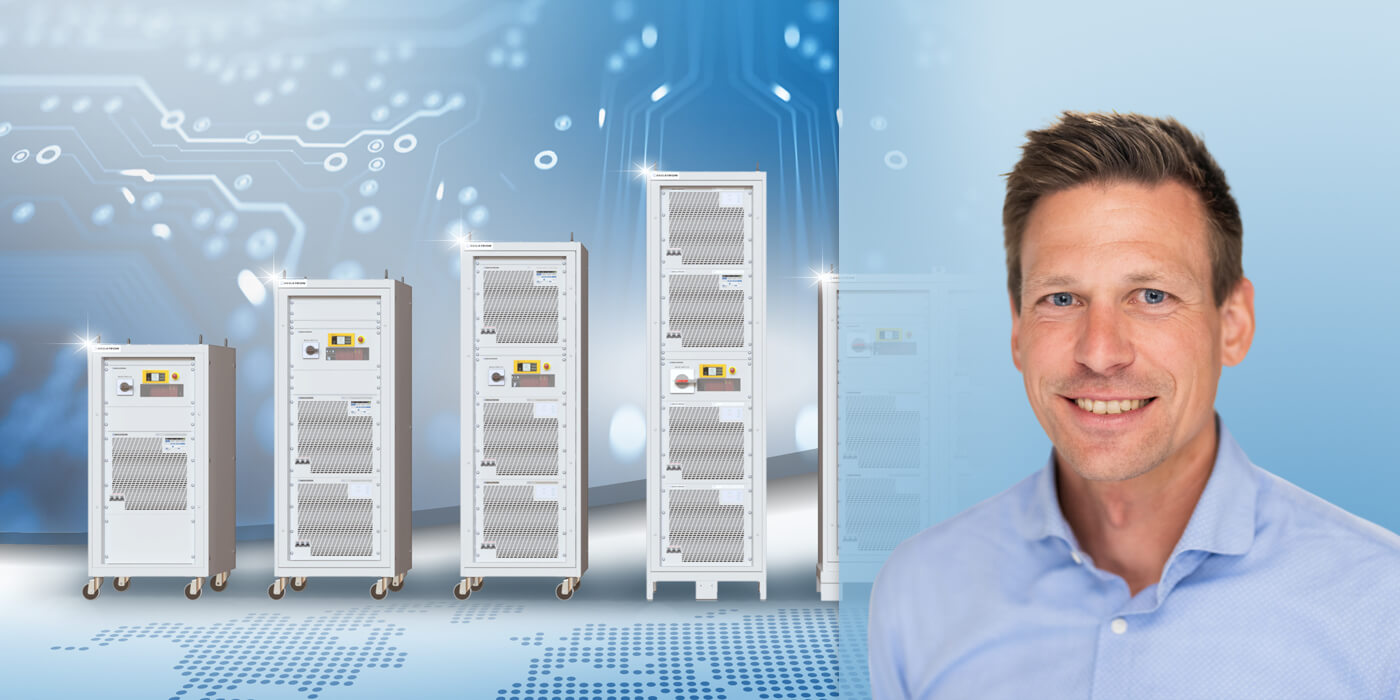
Have Questions or Looking to Tackle a Similar Challenge?
Reach out to our team — we’re happy to support you with technical expertise, detailed guidance, and solution-oriented consultation.
REGATRON Performance. Precision. Quality.

